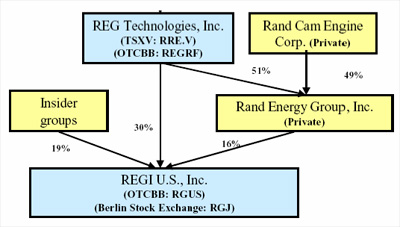How can you persuade the green investor to invest in your company, if your environmental credentials are looking rather weak?
Some industries, by their very nature, are going to do more harm to the environment than others. Companies working in consumer services rather than in basic materials are bound to find it easier to ‘go green’, and to target the green investor.

But how picky should the green investor be?
Is it better for the green money to go to the company who is already performing well, and for whom the percentage improvement possible is relatively tiny, or to go to the company who has performed badly in the past, but who is making huge improvements?
Wouldn’t it better for us all, in the long run, to support those companies in the more harmful – but essential – sectors who are doing the most to improve?
Improving the performance of those companies who currently do the most damage to the environment, and rewarding those who manage to make the most improvement each year, will surely make a bigger difference, overall, than rewarding those whose industry has a relatively light footprint in the first place.
We need assessment techniques that show us not only how good/bad each company’s performance is on a number of different measures, but also how much that performance has changed over time. We need to see the trend for each company, and, ideally, to be able to compare this to the performance of other companies.
 Some companies make it easy to see how their performance in this area has changed over time, such as BP, who provide 5-year data for visitors to review. It would be great if we could see the same measures on other sites for comparison purposes.
Some companies make it easy to see how their performance in this area has changed over time, such as BP, who provide 5-year data for visitors to review. It would be great if we could see the same measures on other sites for comparison purposes.
How is CSR performance measured?
There are several major CSR indices, awards, and other methods of assessing a company’s CSR performance, including:
- Dow Jones sustainability index
- FTSE4Good index
- Global Reporting Index (GRI)
- BiTC award
- CSR Network’s Accountability Rating.
All these are wonderful tools and techniques for reporting and rewarding companies who work hard at CSR. Many companies are signed up to one or more, and some have won awards.
If your company hasn’t considered any of the above – why not think about it now? There are resources available to help on each of the sites above.
However, some companies are excluded by their very nature from some of the above. The FTSE4Good Index, for instance, excludes tobacco companies, weapons companies, and those working in the nuclear industry.
What can be done to support these companies in their efforts to improve?
What can be done to encourage those companies who have no interest in it to improve their performances in CSR?
What are the benefits in CSR – and in green investment?
There are definite benefits to engaging in CSR activities, and these have been outlined many times (see CSR Network for a summary of the argument for CSR), including:
- reduced cost
- improved productivity and quality
- increased sales
- increased profits
- enhanced reputation
- improved employee recruitment and retention.
These are the arguments that must be used to persuade companies that it is in their own interests to work on CSR.
Once that’s done, though, how can green-inclined investors be persuaded to invest in companies that are currently not-very-green?
I suggest that the answer is explaining:
- that engaging in CSR activity results in enhanced financial performance for the company
- that improvements in CSR in currently poorly performing companies (in CSR terms) could achieve big results environmentally
- that investing in a company with a long way to go in CSR terms but which wishes to improve will therefore achieve big results environmentally (thus benefiting the world) – and, probably, financially as well (thus benefiting the investor).
Crucially, of course, the company must be persuaded into a CSR programme before this will work – but once it has agreed, getting the green investors on board will surely add momentum.
This post is part of Blog Action Day, in which bloggers around the world are discussing environmental issues.








 And not just me, either.
And not just me, either.